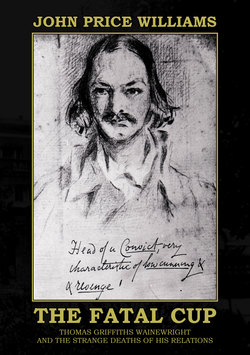Читать книгу The Fatal Cup: Thomas Griffiths Wainewright and the strange deaths of his relations - John Price Williams - Страница 46
На сайте Литреса книга снята с продажи.
Оглавлениеlooking at the pictures; Wainewright’s effort is not among those displayed.
He then showed in the following year Paris in the Chamber of Helen, then The Milkmaid’s Song (1824), and two in 1825, Sketch from La Gerusalemme Liberata and Scene from Der Freischűtz. Two of them were indebted to the German Romantic movement that he admired so much.
The Milkmaid’s Song, was praised at the 1824 exhibition by William Blake who declared it “very fine”. All were hung where lesser artists were displayed, well “above the line”. This was a wooden moulding running around the Great Room at Somerset House at a height of about eight feet. Large works and those of celebrated artists’ works sat on the line.
None of Wainewright’s exhibits is known to survive. Despite having exhibited six pictures and applied for one of the three vacancies to become an Associate Member of the Academy, he failed to receive a single vote. This is surprising, given his closeness to Sir Thomas Lawrence and the Academy’s Professor of Painting and Keeper, the Swiss-German artist John Henry Fuseli. Indeed, he was in a special carriage with Lawrence in the funeral procession as they followed Fuseli’s lead-lined coffin to St Paul’s Cathedral.
Wainewright was a passionate admirer of Fuseli, whose 1782 painting of Gothic horror The Nightmare - a study of a supine woman upon whom is seated a malevolent imp - created a sensation, as did many of his later supernatural works. Wainewright was so close to Fuseli that one of the
THE FATAL CUP
46
